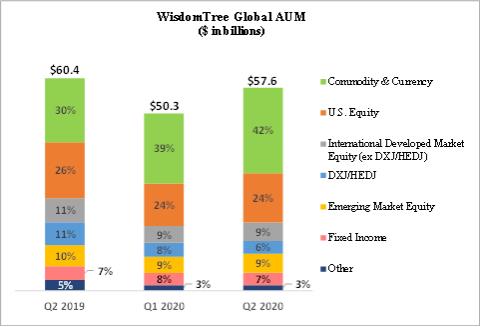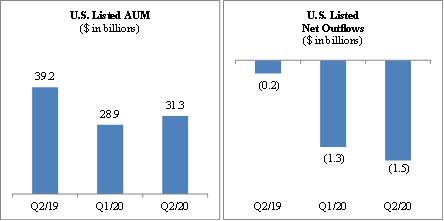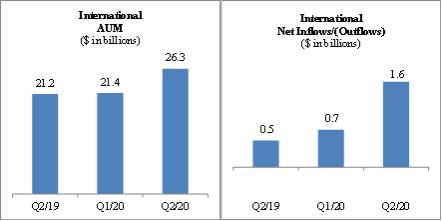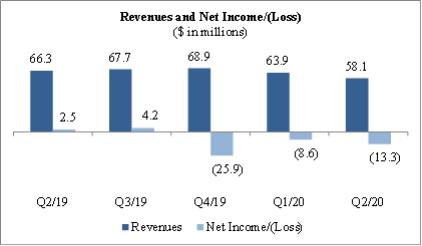Recently Adopted Accounting Pronouncements
On January 1, 2020, we adopted ASU
2016-13,
Financial Instruments-Credit Losses (Topic 326) – Measurement of Credit Losses on Financial Instruments
(ASU
2016-13).
The main objective of the standard is to provide financial statement users with more decision-useful information about the expected credit losses on financial instruments and other commitments to extend credit held by a reporting entity at each reporting date. In issuing the standard, the FASB is responding to criticism that prior guidance delayed recognition of credit losses. The standard replaced the prior guidance’s “incurred loss” approach with an “expected loss” model. The new model, referred to as the current expected credit loss (“CECL”) model, applies to: (1) financial assets subject to credit losses and measured at amortized cost, and (2) certain
off-balance
sheet credit exposures. The standard is applicable to loans, accounts receivable, trade receivables, and other financial assets measured at amortized cost, loan commitments and certain other
off-balance
sheet credit exposures, debt securities (including those
and other financial assets measured at fair value through other comprehensive income, and beneficial interests in securitized financial assets. The CECL model does not apply to
debt securities. For
debt securities with unrealized losses, entities measure credit losses in a manner similar to prior guidance, except that the credit losses are recognized as allowances rather than reductions in the amortized cost of the securities. Accordingly, the new methodology is utilized when assessing our financial instruments for impairment. As a result, entities recognize improvements to estimated credit losses immediately in earnings rather than as interest income over time. The ASU also simplified the accounting model for purchased credit-impaired debt securities and loans. ASU
2016-13
also expanded the disclosure requirements regarding an entity’s assumptions, models, and methods for estimating the allowance for loan and lease losses. The adoption of this standard, which is applicable to our trade receivables, notes receivable and
securities did not have a material impact on our consolidated financial statements.
On January 1, 2020, we adopted ASU
2018-13,
Fair Value Measurement (Topic 820) – Disclosure Framework – Changes to the Disclosure Requirements for Fair Value Measurement
(ASU
2018-13),
which modified the disclosure requirements on fair value measurements, including removing the requirement to disclose (1) the amount of and reasons for transfers between Level 1 and Level 2 of the fair value hierarchy, (2) the policy for timing of transfers between levels and (3) the valuation processes for Level 3 fair value measurements. ASU
2018-13
also added new disclosures including the requirement to disclose (a) the changes in unrealized gains and losses for the period included in other comprehensive income for recurring Level 3 fair value measurements held at the end of the reporting period and (b) the range and weighted average of significant unobservable inputs used to develop Level 3 fair value measurements. This standard only impacted the disclosures pertaining to fair value measurements and were incorporated into the notes to our consolidated financial statements.
| QUANTITATIVE AND QUALITATIVE DISCLOSURES ABOUT MARKET RISK |
The following information, together with information included in other parts of this Management’s Discussion and Analysis of Financial Condition and Results of Operations, describes key aspects of our market risk.
Market risk to us generally represents the risk of changes in the value of our ETPs that results from fluctuations in securities or commodity prices, foreign currency exchange rates against the U.S. dollar, and interest rates. Nearly all our revenues are derived from advisory agreements for the WisdomTree ETPs. Under these agreements, the advisory fee we receive is based on the average market value of the assets in the WisdomTree ETP portfolios we manage.
Fluctuations in the value of the ETPs are common and are generated by numerous factors such as market volatility, the overall economy, inflation, changes in investor strategies and sentiment, availability of alternative investment vehicles, government regulations and others. Accordingly, changes in any one or a combination of these factors may reduce the value of investment securities and, in turn, the underlying AUM on which our revenues are earned. These declines may cause investors to withdraw funds from our ETPs in favor of investments that they perceive as offering greater opportunity or lower risk, thereby compounding the impact on our revenues. We believe challenging and volatile market conditions will continue to be present in the foreseeable future.
We invest our corporate cash in short-term interest earning assets, primarily money market instruments at a commercial bank, federal agency debt instruments and other securities which totaled $33.9 million and $13.8 million as of December 31, 2019 and June 30, 2020, respectively. We do not anticipate that changes in interest rates will have a material impact on our financial condition, operating results or cash flows.
In addition, our Convertible Notes bear interest at a fix rate of interest of 4.25%. Therefore, we have no direct financial statement risk associated with changes in interest rates. However, the fair value of the Convertible Notes changes primarily when the market price of our common stock fluctuates or interest rates change.
We are subject to currency translation exposure on the results of our
non-U.S.
operations, primarily in the United Kingdom and Europe. Foreign currency translation risk is the risk that exchange rate gains or losses arise from translating foreign entities’ statements of earnings and balance sheets from functional currency to our reporting currency (the U.S. dollar) for consolidation purposes. The advisory fees earned on our international listed ETPs are predominantly in U.S. dollars (and also paid in gold ounces, as described below), however, expenses for corporate overhead are generally incurred in British pounds. Currently, we do not enter into derivative financial instruments aimed at offsetting certain exposures in the statement of operations or the balance sheet but may seek to do so in the future.







